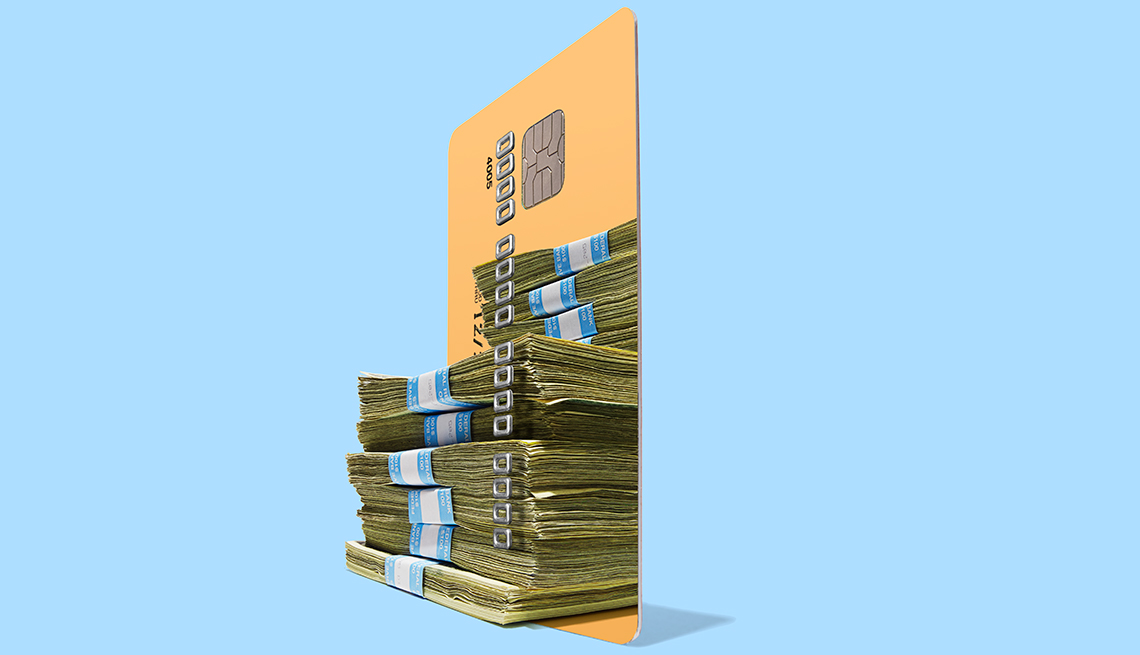Staying Fit
Do you ever wonder if your credit card is subpar—and if another one might get you better perks or deals?
No wonder, given the 1,000-plus cards you can choose from. “There are so many options today, it can be hard to know which one is best for you,” says Matt Schulz, senior industry analyst at the rating firm CreditCards.com.


AARP Membership— $12 for your first year when you sign up for Automatic Renewal
Get instant access to members-only products and hundreds of discounts, a free second membership, and a subscription to AARP the Magazine.
To match you with a card that’s a good fit, we found the best ones for seven types of consumers. But be warned: Credit card rewards and special offers can change “at the drop of a hat,” says Kimberly Palmer, credit card expert at NerdWallet.com, which conducts card research. So double-check all terms before you sign up.
The Everyday Spender
You use plastic for daily needs like gas and groceries.
Consider: A cash-back deal
Cash-back credit cards give rebates on purchases—typically 1 to 5 percent of the purchase price. The higher the percentage returned, the more likely it will be restricted to a particular type of spending, such as gas or groceries. If you spent $1,000 in a month on qualifying purchases, you’d likely get back between $10 and $50 as a check or a credit on your bill, depending on your card’s terms.
NerdWallet and Consumer Reports have free, simple online tools that match a card to your spending habits. Some cards offer better deals for specific categories, such as dining or gas; others have a single cash-back rate for everything you buy. For example, the no-fee Citi Double Cash card gives you 1 percent cash back on all purchases, and 1 percent when you pay off the charges. The American Express Blue Cash Preferred card (annual fee: $95) offers 6 percent cash back on up to $6,000 in annual spending at supermarkets, and smaller rebates at other merchants. And the no-fee AARP Card from Chase gives 3 percent back when used at gas stations and restaurants, plus 1 percent everywhere else.
Caveats: Some cards change deal terms every few months, and you may have to “activate” specific categories online to get the cash. Issuers can be nitpicky. American Express, for example, excludes superstores and warehouse clubs from its 6 percent deal. Finally, these deals aren’t worth paying double-digit interest rates on carried balances, so prioritize debt repayment over getting cash back.
The Traveler
You frequent hotels, airports, auto- rental companies and restaurants.
Consider: A card with great rewards and few restrictions
Similar to a frequent-flier program, a rewards credit card gives you points that you can redeem for free plane tickets, lodging or upgrades. Some, tied to a particular airline or hotel chain, give you extras like free checked baggage or bonus points when you patronize that company. Other reward cards aren’t brand specific.
“What matters most in a travel card is flexibility,” Schulz says. “Unless you’re loyal to a certain airline or hotel chain, you want a card that gives you the most options for redeeming your points or rewards.” Chase Sapphire Preferred (annual fee: $95, waived the first year), like some other cards, lets you transfer points directly to certain airlines or hotels, but Chase will also raise your points’ value if you book travel through its Chase Ultimate Rewards site. The no-fee Bank of America Travel Rewards credit card awards bonus points if you’re also a banking customer, with the quantity based on the size of your accounts with Bank of America or Merrill Lynch.
Traveling overseas? Get a card that, like these, doesn’t charge foreign transaction fees, which can be up to 3 percent of every purchase. “People are often surprised when they come home and open their statements,” Palmer says.
Caveat: The value of reward points isn’t fixed, says Jeff Blyskal, senior editor of Consumer Reports, so it’s hard to know the real cash value of the points you accumulate. Sites such as ThePointsGuy and NerdWallet provide point-value estimates, but if the math makes your eyes glaze over, get a cash-back card instead and bank that money for your next trip.
The Recovering Borrower
Your credit score has taken a hit.
Consider: A secured card
The right card, used wisely, can help pave the way to a higher credit score—which in turn can lead to lower rates on other borrowing.
To rebuild your credit, try a secured card, Blyskal says. You open the account with a cash deposit—say, $300—that usually defines your credit limit. Options include OpenSky Secured Visa, which doesn’t require a credit check; the no-fee Capital One Secured Mastercard; and the no-fee Discover it Secured Card, which offers some cash-back rewards. All three cards will report your payment history to credit bureaus, helping you create a record that could boost your score.
Caveat: Don’t confuse this with a debit card. You have to pay off your purchases every month or pay a high interest rate. Secured cards often have an annual percentage rate (APR) in the 25 percent range, compared with 16 percent for the average credit card.

































































